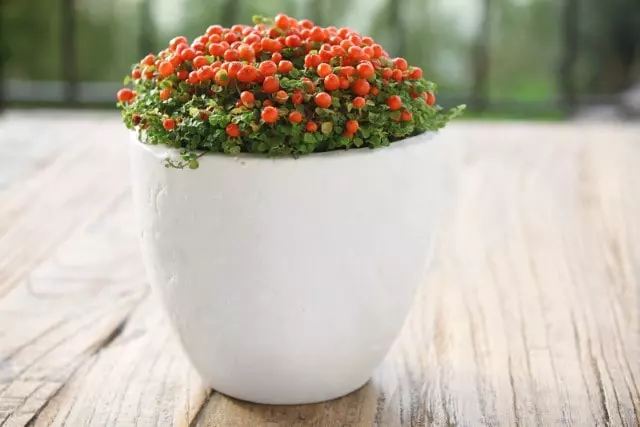The Nertera granadensis is one of the most striking and original options you can choose to decorate your home or garden with touches of green and orange tones, especially during the winter months, which is when its spectacular fructification is seen.
This small plant is very easy to care for, but if you want it to look its best, don’t go away and join us in this article in which we talk about the care of the Nertera granadensis plant.
Table of Contents
Characteristics of the Nertera granadensis Plant
These are the main characteristics of the Nertera granadensis plant:
- There are 15 other species of Nertera. They belong to the Rubiaceae family, like the coffee plant, and are species that have their origin in South and Central America.
- Nertera granadensisis a small perennial, usually no more than 4″ (10 cm) high. In their original environment, they develop a creeping habit, and they will also do so in your garden or pots if conditions are good, growing wide to occupy the available space.
- The Nertera granadensisis also called coral moss, coral bead plant, English baby tears, or pin-cushion plant.
- The most striking feature of the plant is its fruits, orange-colored, oval berries that grow in such large numbers that they can occupy almost the entire surface of the compact bush, leaving the oval leaves barely visible. These fruits appear in autumn and usually extend during the winter. They are preceded by the small flowering of the plant, not very showy and easy to overlook.
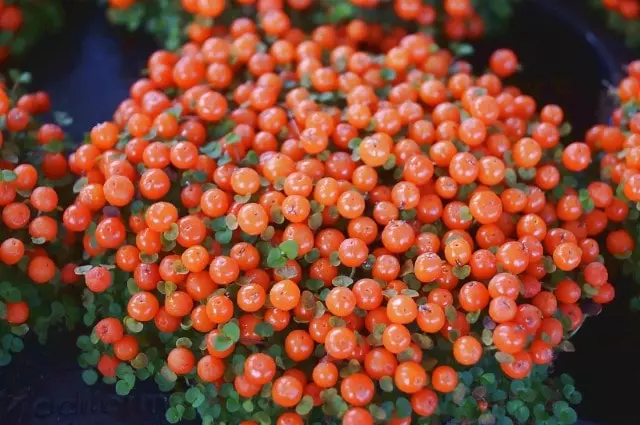
Location for Nertera granadensis
As a plant native to rather warm environments, Nertera granadensis does not tolerate frost or very low temperatures. For this reason, it is common to grow it indoors, or at least move it indoors during the cold months. Unless you live in a tropical environment, your Nertera granadensiss could not spend the winter outdoors, as it does not tolerate temperatures below 45 °F (7 °C), and it is advisable to keep it around 54 °F (12 °C) during the cold months.
Nertera granadensis does not tolerate very intense heat, its ideal high-temperature range being around 74 °F (23 °C), so if you grow it outdoors, you should do so undercover from the worst of the summer sun. As for light, the Nertera granadensis requires plenty of illumination, although it does not tolerate direct sun in hot areas. Find a place with as much indirect light as possible, but protect it from direct sunlight, especially in the midday hours, the most dangerous.
The Nertera granadensis plant can also grow in low light, although its development will be slower. In winter, it is important to move it to a cooler location in the house where the temperature is around 54 °F (12 °C) so that the plant can go into vegetative rest and flower and fruit during the following season.
Watering Nertera granadensis
With Nertera granadensisis important not to wet the leaves, flowers, or fruits when watering, as this can cause problems with humidity and fungus. It is best to water by immersion, submerging the pot in water for about 5 minutes, and then removing it to allow the excess water to drain out through the drainage holes of the pot, which are necessary.
Water whenever the substrate has dried beyond the surface layer, allowing more time in the cold months. Do not use water with a high lime content, which will adversely affect the plant. If you cannot use mineral or distilled water, at least let the irrigation water stand for 24 hours before immersing the pot in it for watering. Learn more about the best time to water plants.
Soil for Nertera granadensis
The Nertera granadensisis not too demanding in this aspect, the only important thing is that the soil should be light and well-drained. For this, it is best to opt for a sandy substrate, although you can also use the universal mixture that we often recommend: peat, coconut fiber, and worm castings mixed in equal parts, along with a few handfuls of vermiculite and perlite. This way you will get a light substrate, well-drained and very rich in nutrients, as well as beneficial microorganisms.
Fertilizer for Nertera granadensis
If you want your Nertera granadensis to give all the flowers and fruits possible to look spectacular, you will have to give it a periodic supply of fertilizer. It is best to use organic and ecological fertilizers, such as worm castings, or compost, which you can even make at home if you have the space for it. Add about 0.8″ (2 cm) of organic matter to the base of the plant every 15 to 20 days from spring to the end of summer, and you will see how your Nertera granadensis will quickly, thank you (Order Fertilizer here).
- All indoor and outdoor plants, tree, vegetables and surf
- It feeds both through the roots and the leaves; This formula of nitrogen, phosphorus and potassium provides fast green-up and rapid leaf expansion
- Formulated for root and shoot growth
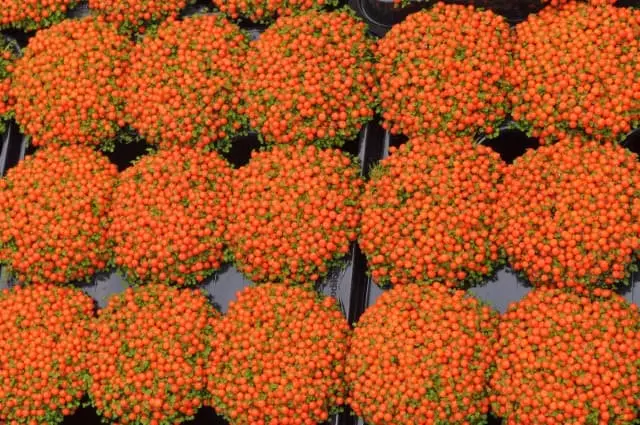
Tips for Care Coral Bead Plant
Fertilize periodically to favor the formation of fruits. Incorrect fertilization can preclude the birth of the fruits of the plant.
Adjust watering to prevent the plant from wilting. In the case of root rot, it is better to divide the plant and bury the parts not affected by the disease.
Keep the plant away from direct sun rays to avoid the darkening of leaves.
The plant can be kept outdoors, in a shaded place, from spring to autumn, and brought back home when berries begin to form.
How to Grow Nertera granadensis in a Pot
If you want to grow Nertera granadensisas a perennial plant, in regions with a very harsh climate it is best to grow it in a pot so that it can be moved inside the house as soon as the temperature starts to drop. You can use a low bowl if you want a cushion ground cover or a tall, narrow pot if you want a Nertera granadensis with a drooping habit.
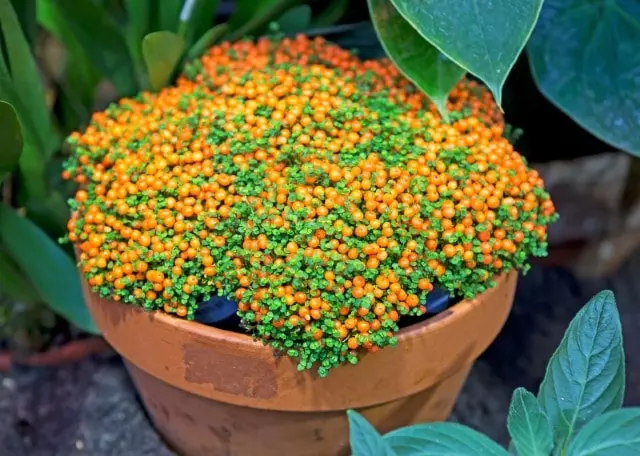
Repotting Coral Bead Plant
Repotting Nertera granadensis should be done annually or when the plant has taken up all the available space. New, wider, or taller containers should be used and the potting soil should be changed.
How to Propagate Nertera granadensis
Nertera granadensisis propagated by seed and by division in spring or early fall.
Propagate Nertera granadensis by Seeds
To propagate Nertera granadensis by seed, the ripe, dried berries of Nertera granadensis are used. In spring, they are buried in a mixture of soil and sand in equal parts, kept constantly moist until the appearance of small shoots, which once strengthened can be transferred into small pots.
Propagate Nertera granadensis by Division
In autumn, Nertera granadensis can be easily propagated by dividing the tufts, paying attention not to damage the delicate roots. Once the plant is extracted from the pot, it is separated into many parts, each one provided with well-developed roots. Each portion or head must be buried at the same time directly in a pot filled with suitable soil. To allow a rapid rooting of the head, it is advisable to place the pots in a shaded place for at least 1 year and only afterward move them to luminous positions, sheltered from direct sun rays.
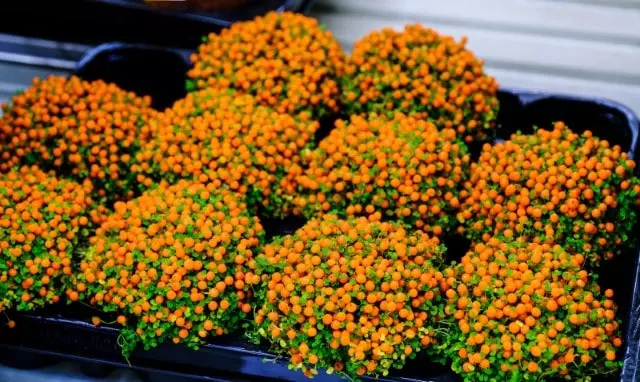
Pruning Coral Bead Plant
The Nertera granadensis needs a light pruning at the end of winter with the only purpose of maintaining the cushion shape of the plant.
Dry branches can be cut at any time of the year, using clean and disinfected scissors (with alcohol or bleach) to prevent them from being a vehicle for parasitic or fungal diseases.
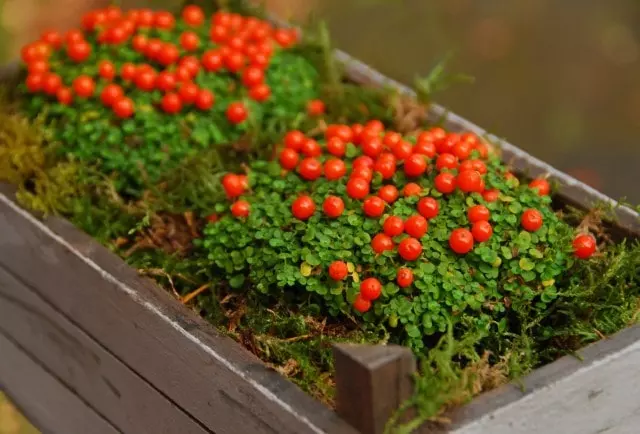
Pests and Diseases of Coral Bead Plant
Nertera granadensis is a rustic plant resistant to diseases and animal pests. In particular environmental conditions, sometimes the plant is affected by aphids, which showily damage the most tender shoots or slow down their growth.
The plant of Nertera granadensis, when cultivated outdoors in full soil, is attacked by snails that are greedy for the most tender leaves. In case of water stagnation in the saucer or the ground, the roots can be attacked by root rot, a fungal disease that causes the deterioration of the plant and its death. Learn more about How to Mix Neem Oil for Plants.
In these cases, it is better to proceed with the division and the burial of the parts not affected by the rot.
